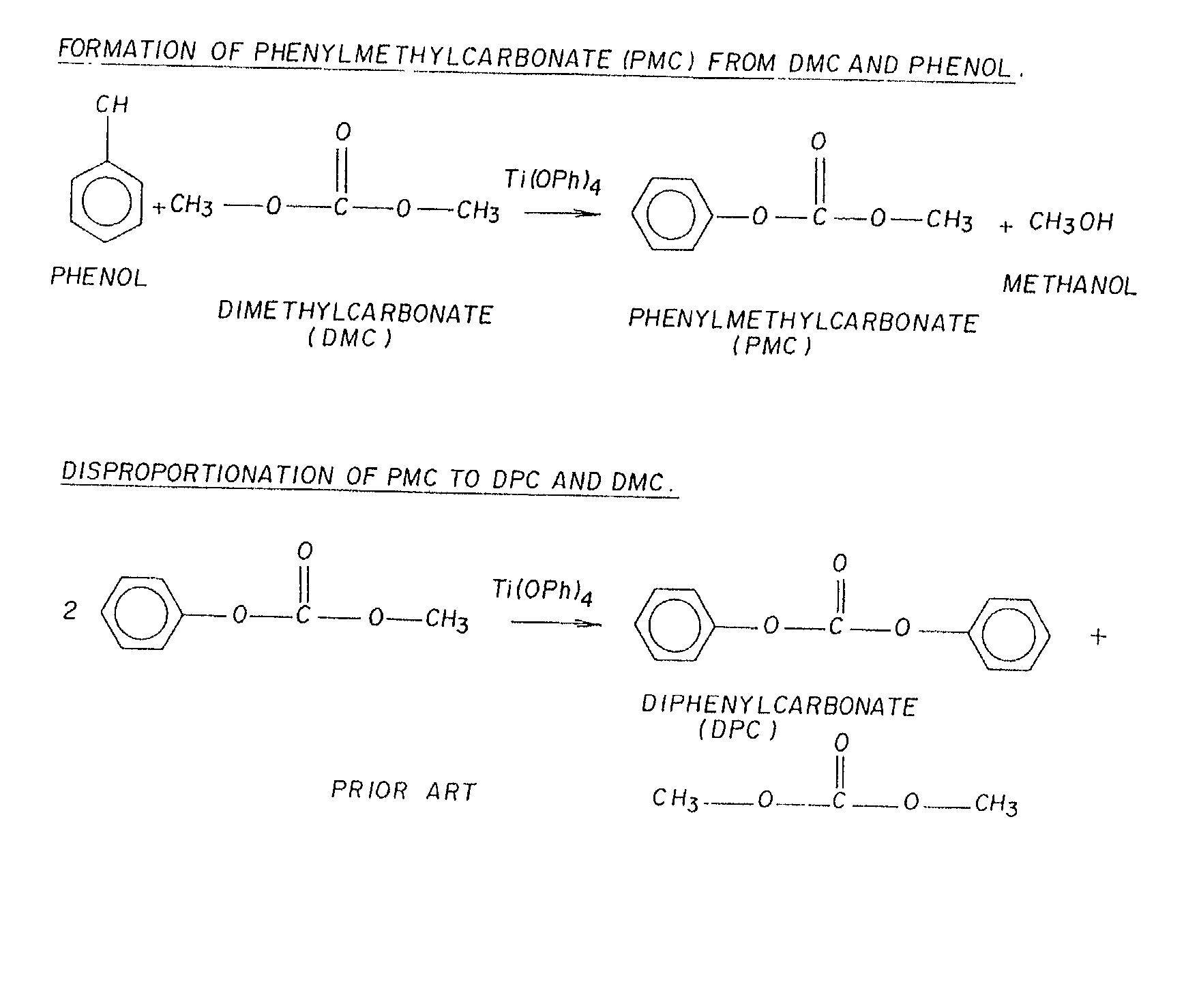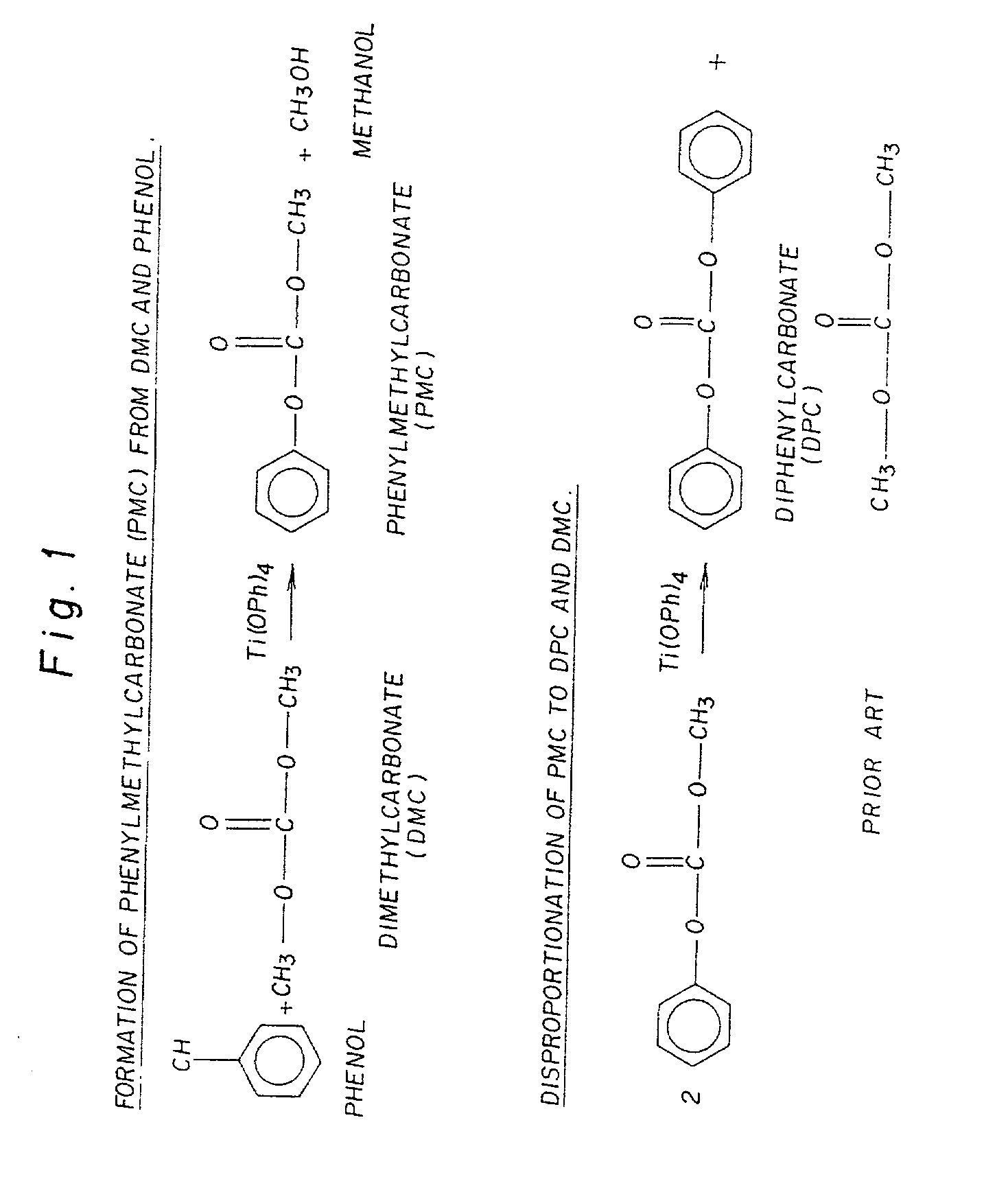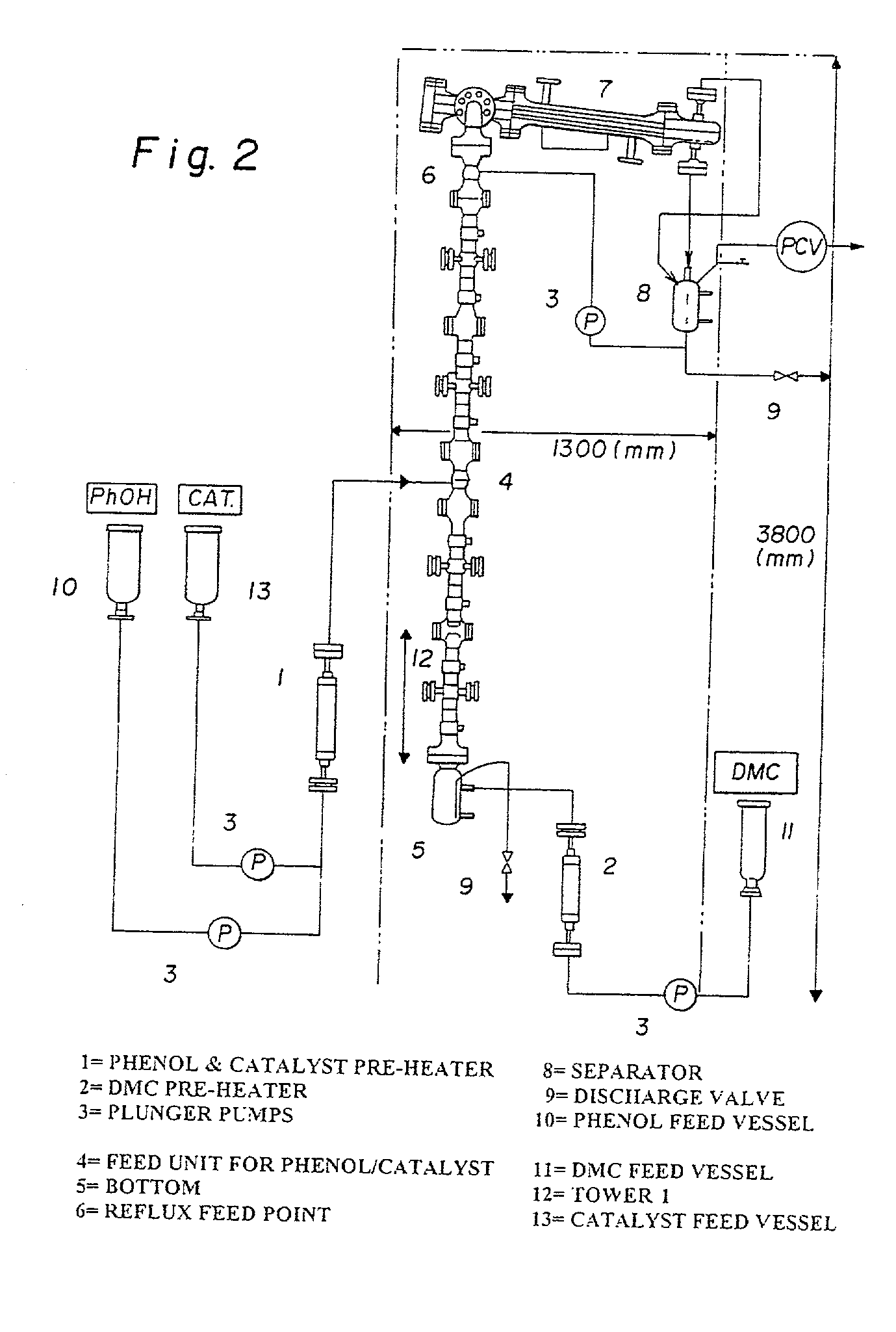Method for the continuous production of aromatic carbonates
a production method and technology of aromatic carbonate, applied in the direction of sustainable manufacturing/processing, carbonic/haloformic acid esters purification/separation, separation processes, etc., can solve the problems of no commercially viable apparatus which is capable, and the process is non-phosgene, etc., and achieve high yield
- Summary
- Abstract
- Description
- Claims
- Application Information
AI Technical Summary
Benefits of technology
Problems solved by technology
Method used
Image
Examples
examples 2 to 32
[0046] Using the same apparatus described in Example 1, experiments were carried out under the reaction conditions indicated in Table 1. Results are shown in Table 1. Examples 25 to 32 correspond to preferred conditions according to the present invention.
example 33
[0047] The results shown in Table 1 were analyzed and fitted into a model using a "Custom Response Surface Design" from the software package Minitab.RTM. for Windows, Release 12.2. The commercially available software operates by using a response surface method to determine the relationship between one or more response variables (for instance Yield or Selectivity) and a set of quantitative experimental variables or factors (for instance Temperature, Pressure, reactant concentrations, etc.). The experimental data are fitted into a model. The type of model is chosen by the user. For instance, the user can choose a linear or a quadratic model. The fitting itself is done via a Least Squares method. The computational method is Givens transformations using Linpack routines. The method is described in: Linpack (1979), Linpack User's Guide by J. J. Dongarra, J. R. Bunch, C. B. Moler, and G. W. Stewart, Society for Industrial and Applied Mathematics, Philadelphia, Pa, which is incorporated by...
PUM
| Property | Measurement | Unit |
|---|---|---|
| Fraction | aaaaa | aaaaa |
| Fraction | aaaaa | aaaaa |
| Linear density | aaaaa | aaaaa |
Abstract
Description
Claims
Application Information
 Login to View More
Login to View More - R&D
- Intellectual Property
- Life Sciences
- Materials
- Tech Scout
- Unparalleled Data Quality
- Higher Quality Content
- 60% Fewer Hallucinations
Browse by: Latest US Patents, China's latest patents, Technical Efficacy Thesaurus, Application Domain, Technology Topic, Popular Technical Reports.
© 2025 PatSnap. All rights reserved.Legal|Privacy policy|Modern Slavery Act Transparency Statement|Sitemap|About US| Contact US: help@patsnap.com



